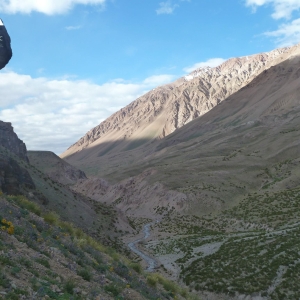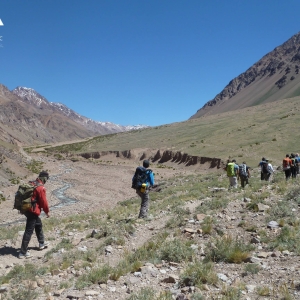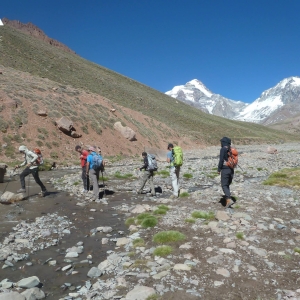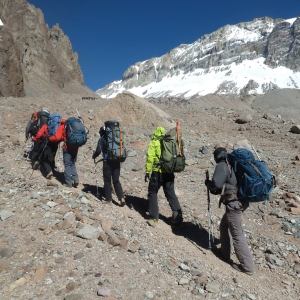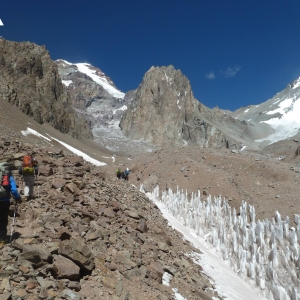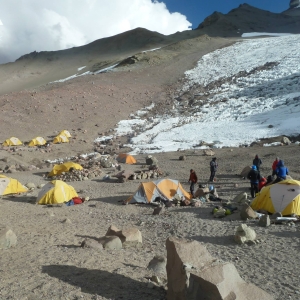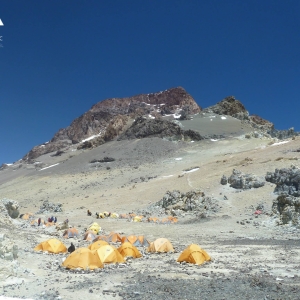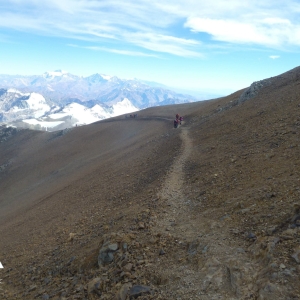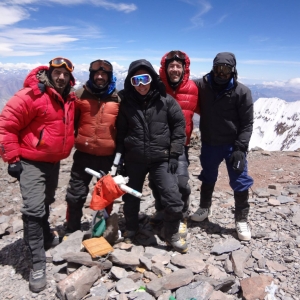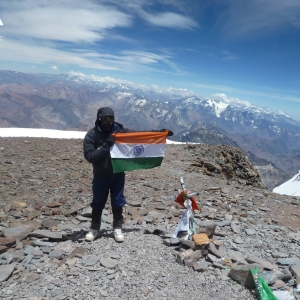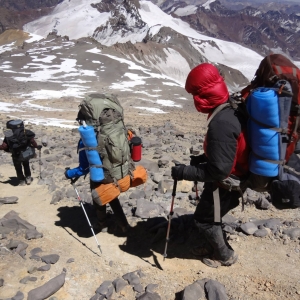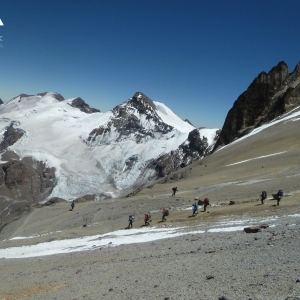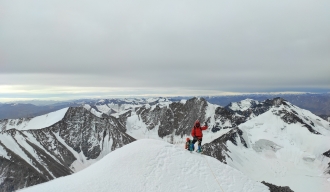ACONCAGUA (6960m)
ACONCAGUA (6960m)
Outside Himalaya
- 20 DAYS
- 12 MAX GROUP SIZE
-
6960m
MAX ALTITUDE  7
Moderate Climb
7
Moderate Climb
Trip leader

/ 6790
Trip costOf the Seven Summits, Aconcagua is the second highest and one of the most technically straightforward to climb. Aconcagua is the highest mountain in the Western and Southern Hemispheres at 6960 m (22,837 ft). It is located in the Andes mountain range, in the province of Mendoza, Argentina, and lies 112 kms (70 mi) northwest of its capital, the city of Mendoza. The summit is also located about 5 kms from San Juan Province and 15 kms from the international border with Chile. It is regarded as the highest trekking peak in the world and can be climbed by those without roped climbing experience.
Typically, crampons are required on summit day. All our equipment would be carried by mules to the Base Camp. Above the Base Camp we ascend gradually ferrying load to higher camps but sleeping at lower camps to increase acclimatization.
As with any mountain, there are numerous routes up Aconcagua. We'll be ascending up the Ameghino Valley & Upper Guanacos Valley Route. After the summit we'll return to our previously established High Camp, and then traverse the mountain and quickly descend the Normal Route. Irrespective of the route taken up the mountain, it is high altitude and extreme weather conditions that would challenge the climber going up Aconcagua's slopes.
Itinerary
Trip Cost
/ 6790
MENDOZA TO MENDOZA , TWIN SHARINGPayment Schedule
/ $1500 - Booking Amount
Balance 60 days prior to the departure
Supplement Costs (extra services if required)
Climbing Permit issued by Mt. Aconcagua State Park (USD 900-USD 1000 per person)
TRIP COST INCLUDES
- Airport transfers in Mendoza
- All transport in Private vehicles
- Hotel accommodation in Mendoza as indicated in the itinerary, based on double occupancy, in a 5* hotel.
- Full board during the expedition (all meals while in the Aconcagua State Park; meals and drinks in Mendoza and Penitentes not included).
- Fully certified, English speaking guides.
- All group gear for the expedition (sleeping tents, stoves and cooking gear, radio, etc).
- Mules to transport your baggage and all expedition supplies, to and from Base Camp.
- Complete base camp service (dining tents, bathrooms, showers, WiFi, meals, storage).
- Water: end-to-end drinking water (including water carriers, if needed).
- Free internet at BC and Confluencia (limitations apply).
- Permanent VHF radio communication.
- All guides are equipped with professional first aid kits and pulse oximeters to monitor acclimatization progress.
- Assistance with the required climbing permit procedure.
- One porter for every four climbers, to carry 20 kg of group gear above BC.
TRIP COST EXCLUDES
- Mt. Aconcagua State Park climbing permit (USD 900-USD 1000 per person)
- Evacuation insurance (required by Mt. Aconcagua State Park).
- Personal porters (above Base Camp)
- Meals and drinks in Mendoza and Penitentes.
- Personal gear, medications, ground or air evacuations, room services, laundry, beverages, phone communications and items of personal nature, insurance liability, hospitalization or medication of any kind, any other service not mentioned in this list.
- Any cost incurred by the climber for leaving the trip early (such as transfers, mules, guide, etc).
- Any tips to guides or the support staff
What to expect
A moderate climbing expedition to a peak above 6000m. These climbs generally have a short approach march and a challenging summit day which is attempted from a base camp or an advance base camp. The climb will require basic climbing skills and would involve being roped up on glacial terrain and climbing with mountaineering boots and crampons in excess of 10hours on the summit night. Some climb even require you to climb on fixed ropes with an ascender on steep terrain. The level of difficulty both physically and technically is a notch above a trekking peak.

